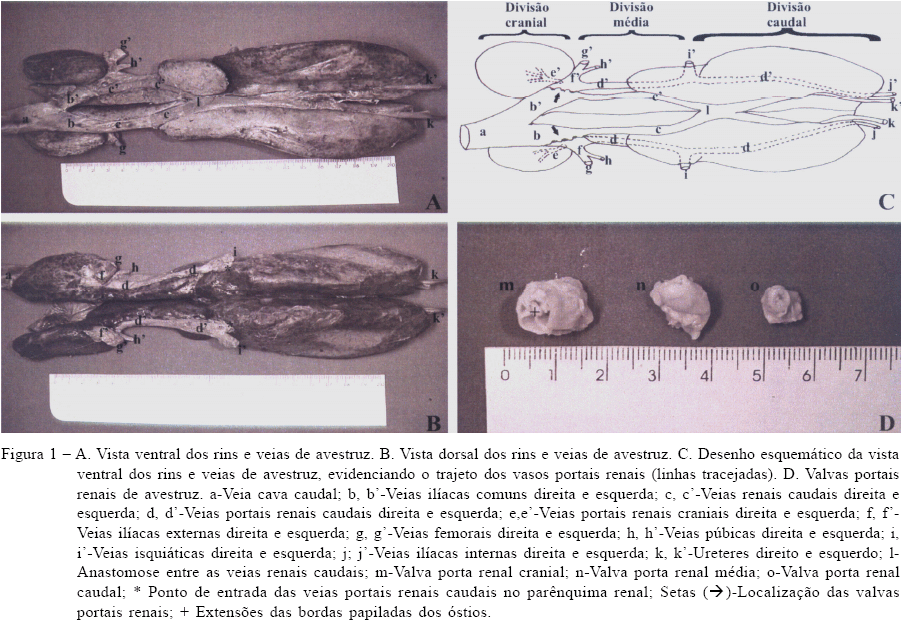This study was aimed at characterizing the anatomy of the renal portal system, and determining its influence on the anesthetic protocol xylazine, tiletamine and zolazepam, in the restraint of ostriches, compared with the administration of drugs into the leg or wing muscles. Latex was injected into the femoral veins of five animals, for drainage purposes, and the birds were then fixed in 10% formaldehyde, for 72 hours. In one bird, the renal portal valves were located, collected and fixed in 10% formaldehyde. The renal portal system consisted of two cranial renal portal veins, two caudal renal portal veins, and six renal portal valves. In the chemical restraint, six ostriches were anesthetized with xylazine (1mg kg-1) and after 10 minutes, tiletamine/zolazepam (6mg kg-1). The animals were handled on two different occasions: in the first anesthesia, the protocol was administered into the muscles at the base of the wings (GI) and after 15 days, the same animals received the protocol in the leg muscles (GII). The periods for the onset and duration of the anesthesia, and recovery, showed no difference between the groups (P>0.05). The heart rate remained below the basal values during the anesthesia (P<0.05), in both groups. The cloacal temperature increased in both groups, particularly in GII, leading to an increased respiratory rate to facilitate heat loss. Since the chemical restraint was adapted for procedures of short duration in the field in the ostriches of both groups, it was not possible to demonstrate the influence of the renal portal system.
anatomy; renal portal system; anesthesia; ostriches


